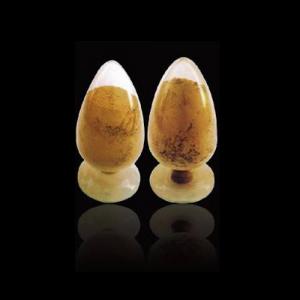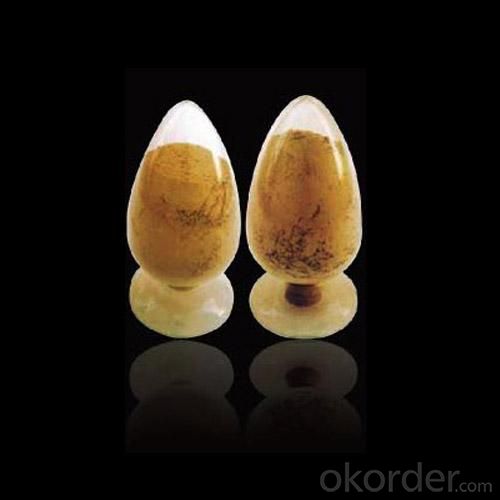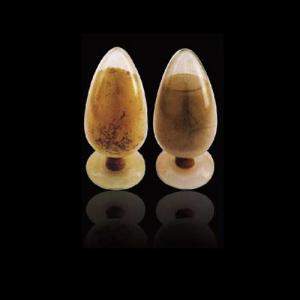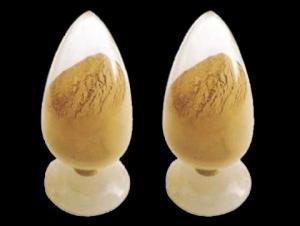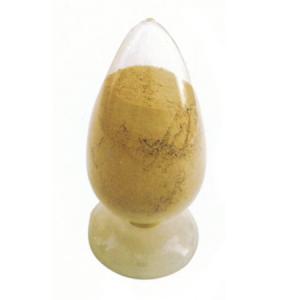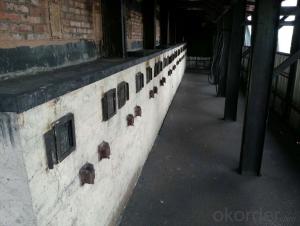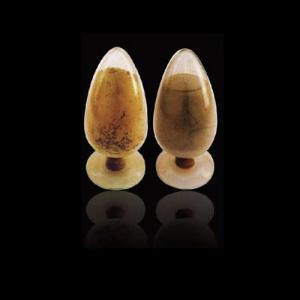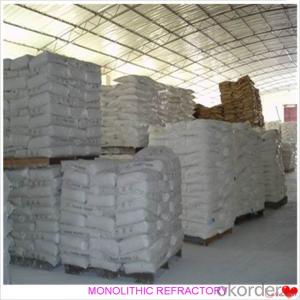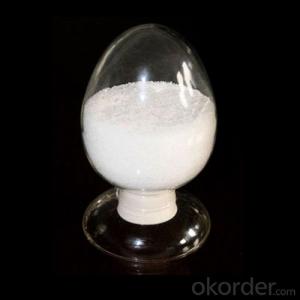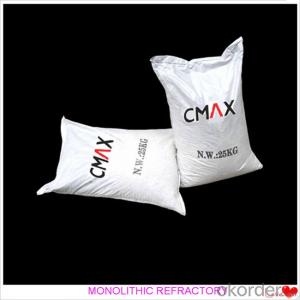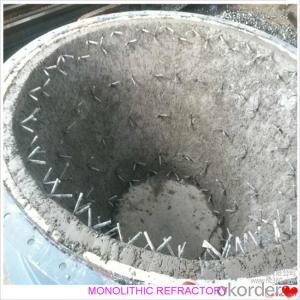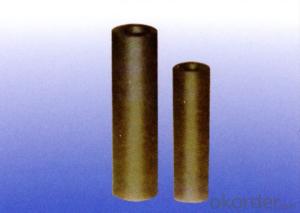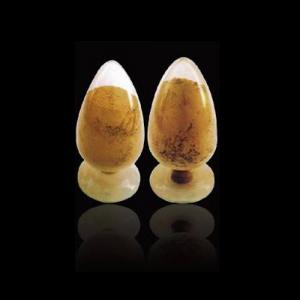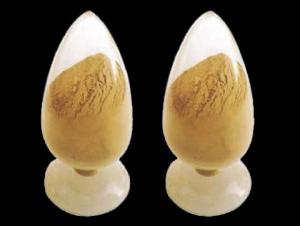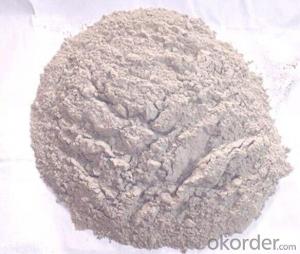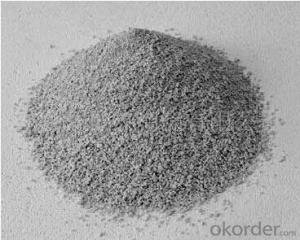Monolithic Refractories for Iron and Steel Industry - Alumina Magnesium Castable for Ladle and Tundish
- Loading Port:
- China Main Port
- Payment Terms:
- TT or L/C
- Min Order Qty:
- 2 m.t.
- Supply Capability:
- 5000 Tons Per Month m.t./month
OKorder Service Pledge
OKorder Financial Service
You Might Also Like
General Information of Alumina Magnesium Castable for Ladle and Tundish
Made as per international standards, FIREF alumina magnesium castable for ladle and tundish has been widely accpeted by the customers for its excellent corrosion resistance, long operating life and high refractoriness. Further, they can be provided in different specifications as required.
Technical data of Alumina Magnesium Castable for Ladle and Tundish
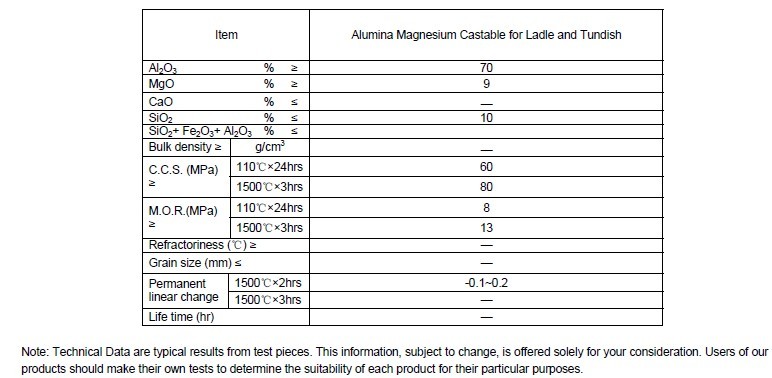
Production line and packing of Alumina Magnesium Castable for Ladle and Tundish
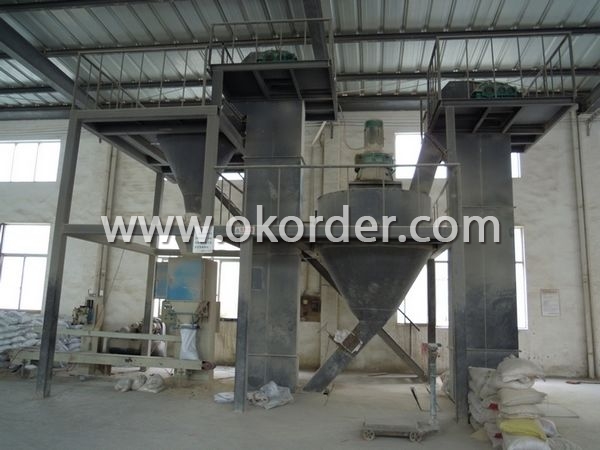
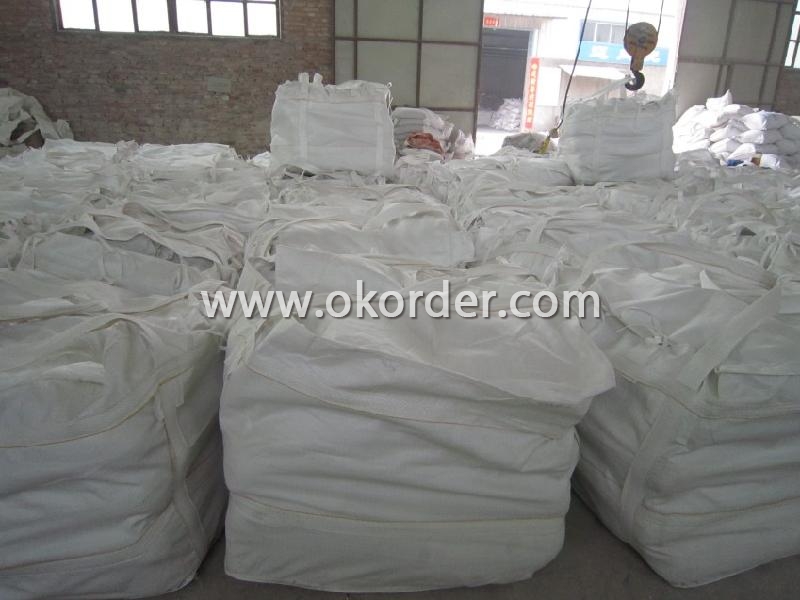
Feature of Alumina Magnesium Castable for Ladle and Tundish
Excellent corrosion resistance
Long operating life
High refractoriness
Application of Alumina Magnesium Castable for Ladle and Tundish
FIREF alumina magnesium castable for ladle and tundish can be used widely in Ladle and Tundish of iron and steel industry.
Production Flow of Alumina Magnesium Castable for Ladle and Tundish
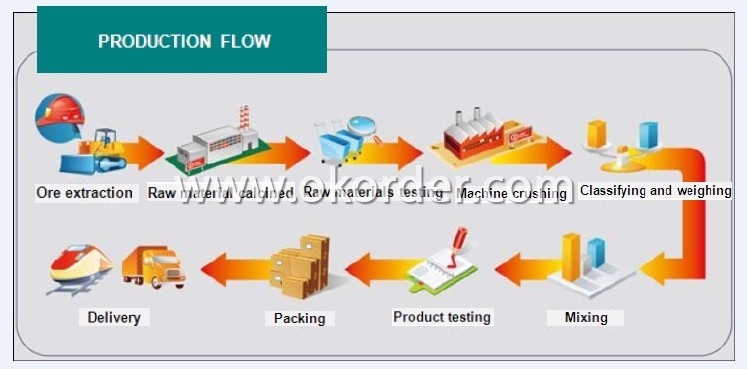
- Q: What are the challenges in using monolithic refractories in the iron and steel industry?
- The iron and steel industry faces significant challenges when it comes to using monolithic refractories. One of these challenges is the fact that monolithic refractories are more prone to thermal shock compared to traditional brick refractories. Unlike brick refractories, which are made from multiple materials and have strong structural integrity, monolithic refractories are made from a single material, which makes them more susceptible to cracking and failure when exposed to rapid changes in temperature. Another challenge lies in achieving consistent and uniform application of monolithic refractories. While brick refractories can be precisely shaped and fitted into specific areas, monolithic refractories are typically applied as a mortar-like mixture that is poured or sprayed into place. This process is more complex and requires skilled operators to ensure proper application and adhesion. Additionally, monolithic refractories have a shorter lifespan compared to brick refractories. They are more vulnerable to erosion and wear, especially in high-temperature environments and when exposed to harsh chemicals and slag. This means that regular maintenance and replacement of monolithic refractories are necessary, leading to increased downtime and costs for the iron and steel industry. Furthermore, selecting and customizing monolithic refractories can be challenging. The iron and steel industry has diverse operating conditions and requirements, making it difficult to find the right monolithic refractory composition and design that can withstand the specific demands of each application. Factors such as temperature, chemical composition, and mechanical stress must be carefully considered. In conclusion, although monolithic refractories offer advantages such as easy installation and versatility, their susceptibility to thermal shock, difficulty in achieving uniform application, shorter lifespan, and the need for customized selection present challenges for their effective use in the iron and steel industry.
- Q: How do monolithic refractories perform in aluminum holding furnace applications?
- The use of monolithic refractories in aluminum holding furnace applications has been proven to be highly efficient and effective. These refractories are designed specifically to withstand the extreme temperatures and chemical environments found in these furnaces. One major advantage of monolithic refractories is their ability to create a continuous and seamless lining in the furnace. This eliminates the need for individual bricks or tiles, reducing the risk of thermal shock and cracking. The absence of joints also minimizes the likelihood of molten aluminum leaking through the lining, ensuring better containment and heat retention. Monolithic refractories also provide excellent thermal insulation properties, which are essential in aluminum holding furnaces. They have low thermal conductivity, helping to reduce heat loss and maintain a stable temperature within the furnace. This leads to improved energy efficiency and lower operating costs. Furthermore, monolithic refractories have exceptional resistance to corrosion and chemical attack from molten aluminum and its by-products, such as dross and fluxes. This resistance ensures a longer lifespan for the refractory lining, reducing the need for maintenance and downtime. In addition, monolithic refractories are known for their easy installation and repair. They can be installed quickly and easily, requiring minimal downtime for furnace maintenance. If any localized damage or wear occurs, repairs can be efficiently made by patching or spraying the affected area. In conclusion, monolithic refractories are an excellent choice for aluminum holding furnace applications due to their seamless lining, thermal insulation properties, resistance to corrosion, and easy installation and repair. These refractories significantly enhance the overall performance and efficiency of aluminum holding furnaces.
- Q: What are the advantages of using insulating castables in the iron and steel industry?
- There are several advantages of using insulating castables in the iron and steel industry. Firstly, insulating castables provide excellent thermal insulation. They have low thermal conductivity, which helps to minimize heat loss from the furnaces and other equipment. This is particularly important in the iron and steel industry, where high temperatures are required for various processes. The insulation provided by castables helps to maintain a stable temperature within the furnace, resulting in improved energy efficiency and reduced fuel consumption. Secondly, insulating castables have high strength and excellent resistance to thermal shock. This is crucial in the iron and steel industry, where extreme temperature changes are common. The castables can withstand rapid heating and cooling cycles without cracking or compromising their structural integrity. This ensures the longevity and durability of the refractory lining, reducing the need for frequent maintenance and repairs. Furthermore, insulating castables are lightweight and easy to install. Their low density makes them easier to handle and transport, resulting in reduced labor costs and shorter installation times. This is particularly advantageous in large-scale iron and steel plants, where time and cost efficiency are critical. Moreover, insulating castables offer good corrosion resistance. The harsh environment in the iron and steel industry, with the presence of molten metal, slag, and various chemicals, can cause corrosion and erosion of refractory materials. Insulating castables are designed to withstand these corrosive conditions, ensuring the longevity of the lining and minimizing the risk of downtime and production disruptions. Lastly, insulating castables are versatile and can be customized to meet specific requirements. They are available in various compositions and densities, allowing for tailored solutions to different applications within the iron and steel industry. This versatility ensures optimal performance and efficiency in various furnace and equipment designs. In conclusion, the advantages of using insulating castables in the iron and steel industry include excellent thermal insulation, high strength, resistance to thermal shock, lightweight installation, corrosion resistance, and versatility. These benefits contribute to improved energy efficiency, reduced maintenance costs, increased durability, and enhanced overall productivity in the industry.
- Q: How do monolithic refractories withstand high temperatures in iron and steel production?
- Monolithic refractories are specially designed to withstand the high temperatures encountered in iron and steel production. These refractories are made from a single piece or a single material, unlike traditional brick refractories that are made by laying bricks one by one. The ability of monolithic refractories to withstand high temperatures is due to their unique composition and structure. They are made from high-quality raw materials such as alumina, magnesia, silica, and carbon, which have high melting points and excellent heat resistance. The monolithic refractory is typically mixed with a binder, such as clay or cement, to give it shape and strength. This binder helps to hold the refractory particles together and provides the necessary structure to withstand thermal stresses. Additionally, various additives and additives can be included in the mix to further enhance the refractory properties. During iron and steel production, the monolithic refractories are exposed to extreme temperatures, rapid heating, and cooling cycles, as well as chemical reactions with molten metals and slag. However, the unique composition and structure of monolithic refractories enable them to endure these harsh conditions. The high melting point materials used in monolithic refractories prevent them from melting or deforming under the intense heat of iron and steel production. These materials have excellent thermal conductivity, allowing them to effectively transfer heat away from the hot surfaces, thus preventing overheating and damage. Furthermore, the binders and additives in monolithic refractories help to increase their resistance to thermal shock, which occurs when there is a rapid change in temperature. This resistance is crucial in iron and steel production since the refractories are frequently exposed to extreme temperature differentials. Lastly, the monolithic nature of these refractories eliminates the joints and gaps found in traditional brick refractories. The absence of joints minimizes the risk of heat leakage and infiltration of molten metal or slag, ensuring a more efficient and durable lining. In conclusion, monolithic refractories are specifically designed to withstand the high temperatures encountered in iron and steel production. Their composition, structure, and unique properties enable them to endure extreme heat, rapid temperature changes, chemical reactions, and thermal stresses, making them essential components in the manufacturing of iron and steel.
- Q: How long is the lifespan of monolithic refractories in iron and steel applications?
- The lifespan of monolithic refractories in iron and steel applications can vary depending on several factors such as the specific type of refractory material used, the operating conditions, and the maintenance practices. However, on average, monolithic refractories in iron and steel applications can last anywhere from a few months to several years.
- Q: What are the key properties of monolithic refractories?
- Monolithic refractories, which lack a definite form like bricks or tiles, are a type of refractory material. They are typically composed of a mixture of aggregates, binders, and additives that can be easily molded and installed in various industrial applications. The main characteristics of monolithic refractories include: 1. Exceptional heat resistance: Designed to endure extremely high temperatures, monolithic refractories are suitable for industries such as steel, cement, glass, and petrochemicals. They can maintain their strength and structural integrity even at temperatures exceeding 3000 degrees Fahrenheit. 2. Ability to withstand thermal shock: Monolithic refractories possess the capacity to resist sudden temperature changes, which can cause cracking or damage to the refractory. This property is crucial in environments where rapid heating or cooling occurs, such as furnaces or kilns. 3. Resistance to chemical attack: Monolithic refractories display excellent resistance to corrosion from molten metals, slag, gases, and other harsh substances. This makes them ideal for environments where contact with acidic or alkaline materials is common. 4. Low porosity: Monolithic refractories have low porosity, meaning they have a high density and are less permeable to gases and liquids. This property ensures that molten metals or corrosive substances cannot easily penetrate the refractory, contributing to its longevity and performance. 5. Easy installation and repair: Unlike traditional refractory materials like bricks, monolithic refractories can be easily molded and installed in various shapes and sizes. They can be applied using techniques such as spraying, casting, or ramming, allowing for faster installation and reduced downtime. Additionally, if any damage occurs, they can be easily repaired or patched. 6. Strong mechanical strength: Monolithic refractories possess sufficient mechanical strength to endure the stresses and pressures encountered during their service life. This guarantees their structural integrity, even under high load conditions. Overall, the versatile and reliable properties of monolithic refractories make them an excellent choice for a wide range of industrial applications that require resistance to high temperatures, chemicals, and thermal shock.
- Q: How do monolithic refractories contribute to the quality of iron and steel products?
- Monolithic refractories play a crucial role in the production of high-quality iron and steel products. They provide superior resistance to extreme temperatures, chemical reactions, and mechanical stress in the production process. By maintaining the integrity of furnaces, ladles, and other equipment, monolithic refractories ensure consistent heat distribution and prevent contamination, resulting in improved product quality. Additionally, their ability to withstand thermal shock and erosion prolongs the lifespan of the refractory linings, reducing downtime and enhancing overall efficiency.
- Q: Can monolithic refractories be used for the lining of ladle refining furnaces and VOD converters?
- Yes, monolithic refractories can be used for the lining of ladle refining furnaces and VOD (Vacuum Oxygen Decarburization) converters. Monolithic refractories are versatile materials that can be shaped and installed in various applications, including high-temperature environments like ladle refining furnaces and VOD converters. Monolithic refractories are composed of a single, homogeneous material, which makes them easy to install and repair. They can be either cast or gunned in place, providing flexibility in lining design and installation. The lining of ladle refining furnaces and VOD converters requires materials that can withstand high temperatures, chemical reactions, and mechanical stresses. Monolithic refractories, with their excellent thermal shock resistance and resistance to chemical attack, are well-suited for these demanding applications. In ladle refining furnaces, monolithic refractories are used to line the ladle, which holds and processes molten metal. These refractories help maintain the desired temperature and protect the ladle from the corrosive effects of molten metal and slag. They also provide insulation to minimize heat loss and improve energy efficiency. VOD converters are used in the steelmaking process to reduce the carbon content of molten steel. Monolithic refractories are used to line the converter's vessel and maintain the necessary temperature for the decarburization reaction. They also provide protection against the corrosive effects of molten metal and slag, ensuring the longevity and performance of the converter. Overall, monolithic refractories offer excellent properties for the lining of ladle refining furnaces and VOD converters. Their versatility, ease of installation, and resistance to high temperatures and chemical attack make them an ideal choice for these critical applications in the steel industry.
- Q: What are the main factors affecting the thermal conductivity of monolithic refractories?
- The main factors affecting the thermal conductivity of monolithic refractories are the composition and structure of the refractory material, the porosity and density of the material, the presence of any impurities or defects, and the temperature and pressure conditions at which the refractory is being used.
- Q: How do monolithic refractories improve the performance of iron and steel furnaces?
- Monolithic refractories play a crucial role in enhancing the performance of iron and steel furnaces through various means. Firstly, these refractories offer exceptional thermal insulation, which helps maintain a stable and high temperature within the furnace. This is of utmost importance as the production of iron and steel necessitates extremely high temperatures for efficient melting and refining processes. Secondly, monolithic refractories possess remarkable resistance to thermal shock and can endure rapid temperature fluctuations without cracking or spalling. This is particularly significant in iron and steel furnaces where temperature fluctuations can be substantial during operations. By withstanding thermal shock, these refractories ensure the durability of the furnace lining, thereby reducing the need for maintenance and minimizing downtime. Moreover, monolithic refractories display excellent resistance to chemical attacks caused by the molten metal and slag in the furnace. The production of iron and steel involves the use of various chemical agents that can corrode and erode the furnace lining. Monolithic refractories offer superior resistance to these chemical attacks, preserving the integrity of the furnace lining and preventing contamination of the metal being produced. Additionally, monolithic refractories possess exceptional mechanical strength and abrasion resistance. This is crucial as they are subjected to mechanical stresses and wear resulting from the movement of materials inside the furnace, such as charging and tapping operations. The high mechanical strength and abrasion resistance of these refractories ensure their durability and prolong their service life in iron and steel furnaces. In conclusion, monolithic refractories enhance the performance of iron and steel furnaces by providing superior thermal insulation, resistance to thermal shock and chemical attacks, as well as high mechanical strength and abrasion resistance. These properties contribute to the efficient and reliable operation of the furnace, resulting in increased productivity, reduced maintenance costs, and improved product quality.
1. Manufacturer Overview
| Location | Henan, China |
| Year Established | 2007 |
| Annual Output Value | Above US$ 60 Million |
| Main Markets | Mid East; Eastern Europe; North America |
| Company Certifications | ISO 9001:2008 |
2. Manufacturer Certificates
| a) Certification Name | |
| Range | |
| Reference | |
| Validity Period |
3. Manufacturer Capability
| a) Trade Capacity | |
| Nearest Port | Tianjin |
| Export Percentage | 31% - 50% |
| No.of Employees in Trade Department | 21-50 People |
| Language Spoken: | English; Chinese |
| b) Factory Information | |
| Factory Size: | Above 36,000 square meters |
| No. of Production Lines | Above 5 |
| Contract Manufacturing | OEM Service Offered |
| Product Price Range | Average |
Send your message to us
Monolithic Refractories for Iron and Steel Industry - Alumina Magnesium Castable for Ladle and Tundish
- Loading Port:
- China Main Port
- Payment Terms:
- TT or L/C
- Min Order Qty:
- 2 m.t.
- Supply Capability:
- 5000 Tons Per Month m.t./month
OKorder Service Pledge
OKorder Financial Service
Similar products
Hot products
Hot Searches
Related keywords
